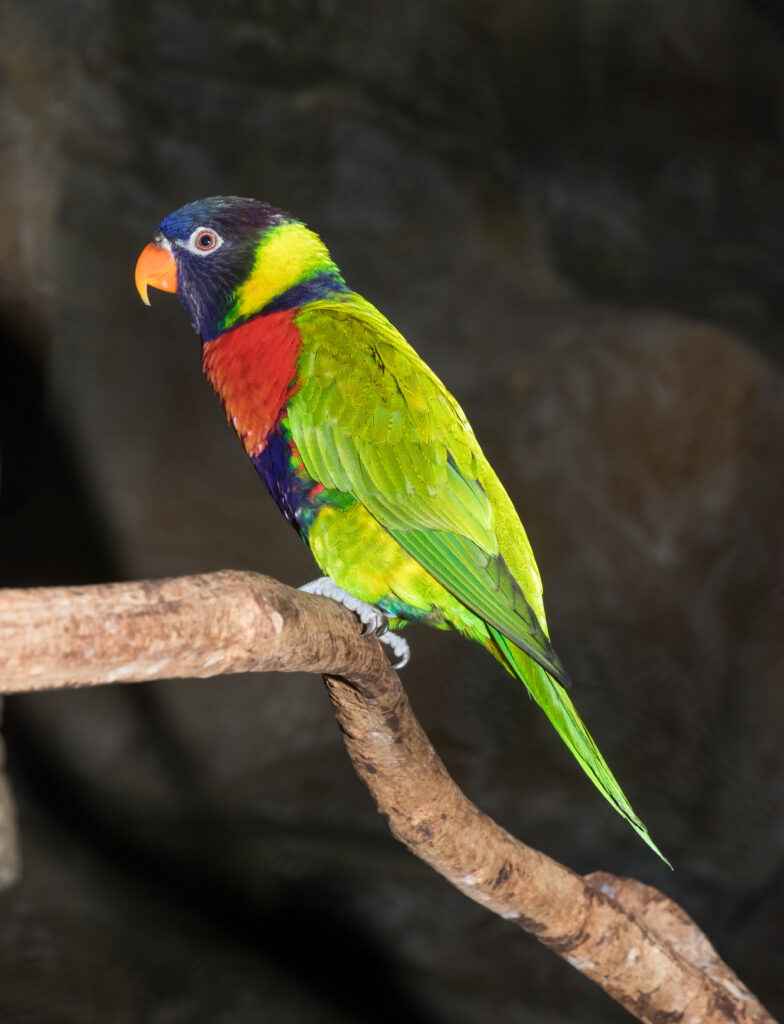
The Sunset Lorikeet (Trichoglossus forsteni) is a colorful parrot species belonging to the family Psittaculidae. Here’s a detailed overview of this beautiful bird:
🐦 Common Name:
Sunset Lorikeet
🔬 Scientific Name:
Trichoglossus forsteni
🌍 Distribution:
Endemic to the islands of Sumbawa, Bali, and Lombok in Indonesia.
🌿 Habitat:
- Inhabits tropical and subtropical moist lowland forests and montane forests.
- Often found up to elevations of about 2,000 meters.
- Also visits cultivated areas and gardens.
🎨 Appearance:
- Like many lorikeets, it is vibrantly colored.
- Plumage generally includes shades of green, blue, orange, and yellow, with distinctive patterns varying by subspecies.
- Named “Sunset” for the sunset-like gradient of orange and red on the chest or underparts.
🧬 Taxonomy Notes:
- T. forsteni was previously considered a subspecies of the Rainbow Lorikeet (Trichoglossus moluccanus), but is now recognized as a separate species.
- Several subspecies are recognized based on location and slight color variations.
🍽️ Diet:
- Feeds primarily on nectar, pollen, fruits, and flowers.
- Uses a brush-tipped tongue adapted for lapping up nectar.
🐣 Behavior and Breeding:
- Social and noisy; often seen in pairs or small flocks.
- Breeds in tree hollows.
- Both parents typically help in rearing the young.
📉 Conservation Status:
- Listed as Endangered on the IUCN Red List due to:
- Habitat loss
- Trapping for the pet trade
- Population is believed to be declining.
Here’s a beautiful photo of the Sunset Lorikeet (Trichoglossus forsteni), highlighting its striking colors – dark bluish head, lime-green nape, and vivid scarlet chest uk.inaturalist.org+15en.wikipedia.org+15en.wikipedia.org+15.
🌟 About the Species
- Appearance: A vibrant parrot with a bluish-dark head, red bill, bright green back, and a bold red chest that contrasts with its dark belly animal.photos+3ebird.org+3ebird.org+3.
- Range: Endemic to Indonesian islands—Bali, Lombok, Sumbawa, Tanah Jampea, and Kalaotoa—living in forests and plantations from sea level up to ~2,150 m flickr.com+10en.wikipedia.org+10en.wikipedia.org+10.
- Conservation Status: Classified as Endangered by the IUCN due to habitat loss and trapping for the pet trade. Populations are declining, and the species is now rare or extirpated in several islands flickr.com+4flickr.com+4en.wikipedia.org+4.
- Vocalization & Behavior: Lives in noisy flocks and emits shrill screeches like “EEEEK!” ebird.org+1ebird.org+1.
- Ecology: Feeds on nectar, pollen, and fruits, using a specialized brush-tipped tongue designed for lapping nectar. They are monogamous and nest in tree cavities flickr.com+1flickr.com+1.
📸 Notable Sightings & Conservation Efforts
- A compelling image of this lorikeet (sometimes called the scarlet-breasted lorikeet) was uploaded in April 2024 by Estefania Almarte. The accompanying IUCN assessment reiterated its endangered status, driven largely by habitat destruction and illegal trade leesbird.com+14flickr.com+14en.wikipedia.org+14.
- Conservation programs such as the Silent Forest initiative and breeding partnerships in European zoos (e.g., CCBC, EEP) are actively working to preserve and potentially reintroduce the species into the wild flickr.com+1flickr.com+1.